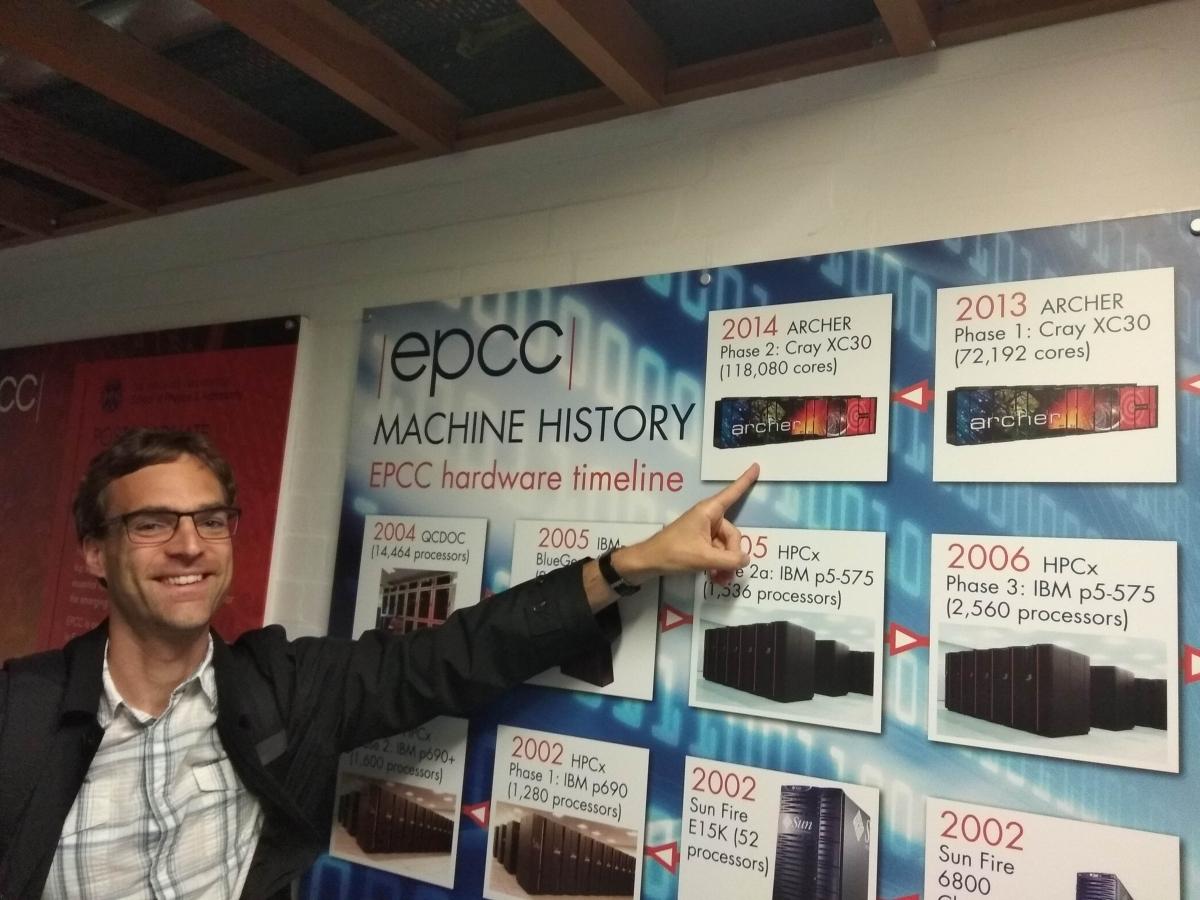HPC-Europa3: My visit
7 August 2018
Dr Martin Lepšík came on an HPC-Europa3 visit in July 2018 and was hosted by Dr Emanuele Paci at the University of Leeds. Martin started his visit by coming to Edinburgh.

My name is Martin Lepšík, and I am a Czech computational structural biologist. After 11 years of fruitful research in quantum mechanics-based drug design (at P. Hobza’s group at IOCB, Prague, CR), I decided to enrich my expertise with enhanced-sampling molecular dynamics of lectin-carbohydrate complexes, important for human health and disease.
To pursue my goal, I struggled hard to obtain a Marie-Sklodowska Curie Individual Fellowship. This allowed me to embark on a two-year stay at CERMAV-CNRS, Grenoble, France (at A. Imberty’s lab). To fuel the proposed research with high-performance computing, I applied for a grant with HPC-Europa3 to visit Dr Emanuele Paci at the University of Leeds and to use the HPC resources at EPCC in Edinburgh. Once awarded, I started planning the research stays with great help from Ms Catherine Inglis at EPCC who made all the practicalities run smoothly.
My UK visit started with the first two days being spent at EPCC in Edinburgh, which were a very useful beginning – I got to meet the HPC Europa3 team at EPCC and gave a presentation on my work at EPCC. My big thanks go to Dr Mario Antonioletti who showed me around and helped me throughout. My first task was to study the hardware and software of the EPCC supercomputers to be able to use them. This allowed me to pass the ARCHER Driving Test and get the valuable certificate. I have now got access and core-hours, crucial for the next stage.
In my free time, I explored the city. I had to be careful with cars because it appeared the drivers were not looking in front of them, sometimes they were kids or even dogs! (until I remembered the driving wheel is on the other side in the UK :-> ). But still I was unsure which way to look when crossing the road. Edinburgh offered me a nice walk around the castle with views on the sea, sea-gulls laughing, double-deckers cruising...
Then, I took the cross-country train to Leeds where I spent 11 days at the host’s laboratory (Dr. E Paci, University of Leeds, UK). I could build upon what I had learned at EPCC, benchmarking several molecular dynamics programs on the supercomputers against local GPU systems on biological systems of interest. With Mario’s help, I could set up a protocol in terms of scaling with the increasing number of processors with optimal efficiency. But as usual, further fine-tuning is warranted.
The city of Leeds is incredible in combining historic and modern buildings (below left). On my way to the airport I was amazed by the remnants of the 11th century Cistercian Kirkstall Abbey (below right). Having had fish and chips for lunch, I said farewell to Great Britain.
Taken together, my two-week scientific stay funded by HPC-Europa3 was a very efficient and pleasant way of learning how supercomputers at EPCC work. Thus, I can now exploit them for scientific research with bearing on human health.
